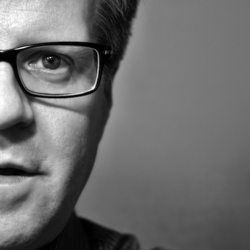Before you instinctively dial in a wide aperture for that dreamy bokeh, consider what you might be losing in terms of your photograph’s ability to tell a story. How about taking your fingers off that aperture ring for a moment and listening to one of the world’s greatest visual storytellers?
Still photography and filmmaking are all about telling stories, and to be a great photographer or a great film director, you need to be a great storyteller. Steven Spielberg’s preternatural flair for telling a story has been the foundation of his success as a director and has made him an icon of the film industry. Many of his movies are considered major landmarks in popular culture, and as somebody who grew up watching them myself, movies like “Jaws,” “Raiders of the Lost Ark,” “Schindler’s List,” and “Saving Private Ryan” (to name but a few) have also felt like milestones in my own life.
Steven Spielberg is one of the most hands-on directors when it comes to determining the visual look and feel of his movies—to the point where, unlike many other directors, he himself will often determine the framing of each shot rather than leaving it to the cinematographer. From his very first film, Spielberg has had access to a wide range of the very best lenses and equipment, yet he has consistently leaned towards the use of wide angle lenses set to a narrower aperture that effectively renders the entire frame in focus. Such is the ease and dexterity of Spielberg’s filmmaking that these kinds of technical details can easily pass unnoticed as you get caught up in the story that is unfolding in front of you, but if you pay attention to this the next time you find yourself watching one of his movies, you can see how he strives to make every part of the frame contribute to the story.
A previous video that I featured here highlighted the problem of falling into the trap of indiscriminately using wide apertures and blurred backgrounds in your photography—to the extent that it can become a kind of creative crutch that might even limit the ability of your photographs to effectively convey the story that you wish to tell. While that video explored the work of still photographers who had made the deliberate choice to use a narrower aperture for this purpose, the lesson for the visual creator remains the same. Whether you’re shooting still photographs or movies, the undiscerning use of wide apertures to achieve blurred backgrounds may be hindering your art more than helping it.
In this insightful and well-researched video created by the YouTube film school "wolfcrow," you will learn how Spielberg’s choice of wide angle lenses and narrower apertures allows him to create a more immersive experience for the viewer, pulling them into the frame and deepening the story. As filmmakers or as still photographers, making a conscious decision to blur the background in our frame might be the appropriate choice when the background is extraneous to the story that we wish to convey or because we have a specific need to isolate the subject and focus attention on it. But it may often be the case that making this choice on “autopilot” might also be robbing our visual content of its depth and its expressive potential.







